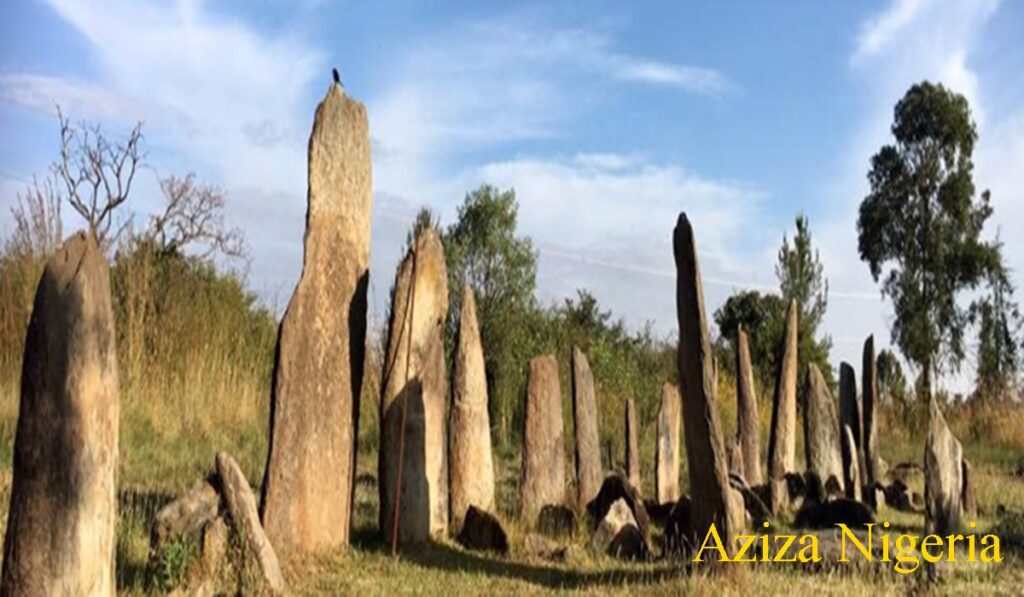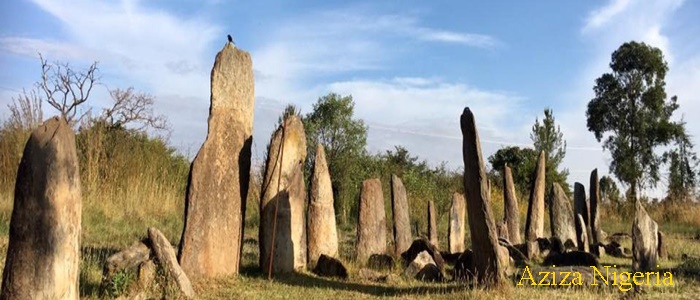
In this post, we explained what cultural heritage is all about, the Cultural Heritage of Ethiopia and the sites, which consist both tangible and intangible heritages and many more.
What is Cultural Heritage?
Cultural heritage includes tangible culture (such as buildings, monuments, landscapes, archive materials, books, works of art, and artifacts), intangible culture (such as folklore, traditions, language, and knowledge), and natural heritage (including culturally significant landscapes, and biodiversity).
Ethiopia Cultural Heritage Sites
There are nine (9) Ethiopian cultural Heritage Sites. The United Nations Educational, Scientific and Cultural Organization (UNESCO) World Heritage Sites are places of importance to cultural or natural heritage as described in the UNESCO World Heritage Convention, established in 1975 Ethiopia ratified the convention as one of the first countries on July 6, 1977, making its historical sites eligible for inclusion on the list.
Sites in Ethiopia were first inscribed on the list at the 2nd Session of the World Heritage Committee held in Washington, D.C. in 1978. At that session, two sites were added: the Rock-Hewn Churches, Lalibela and Simien National Park As of August 2021. Ethiopia has nine total sites inscribed on the list, Of these one site, Simien National Park, is of natural type, and the others are cultural sites.
Ethiopia is amongst the countries that have registered their tangible and intangible heritage under UNESCO’s cultural heritage list. According to the Ethiopian Ministry of Culture and Tourism, UNESCO has recognized four intangible and nine tangible Ethiopian (a total of 13) heritages.
ETHIOPIAN CULTURAL HERITAGE SITES ARE GROUPED INTO TWO:
INTANGIBLE HERITAGE:
The Ethiopian cultural heritage under the intangible heritage are as follows:
1. Meskel
Meskel, the commemoration feast of the finding of the True Holy Cross of Christ, was inscribed in the UNESCO Representative List of the Intangible Cultural Heritage of Humanity in 2013.
Christian’s faithful and tourists converge at the capital of Ethiopia on the 27th of September or the 28th in a leap year to commemorate the celebration of the Meskel festival. The celebrations begin with the building of the Damera bonfire at Maskel Square in Addis Ababa — a conical pyre of poles surrounded by bundles of branches and torches decorated with green grass.
2. Irreechaa
The Gada System, which is the social, political and cultural reflection of the traditional Oromo people, was registered in the UNESCO Representative List of the Intangible Cultural Heritage of Humanity in October 2016.
The Oromo Thanks Giving Fesival — Irreechaa takes place during October all over Oromia, Ethiopia. Irreechaa means a celebration where people get together and perform their prayers and thanks giving to God.
3. Fichee-Chambalaalla
The third UNESCO registered intangible heritage -Fichee-Chambalaalla is a New Year festival celebrated among the Sidama people in Ethiopia around in July. It was registered by UNESCO in 2015.
Fiche is an anniversary celebrated by the Sidama people as a New Year event. According to socio-cultural heritages handed down by forefathers through generations to descendants (current generation), Sidama New Year (Fiche Chamballala) anniversary has been celebrated for more than 2000 years.
4. TIMKET, Ethiopian Epiphany
The festival of Timiket or Epiphany to commemorate the baptism of Jesus in the Jordan River is celebrated across Ethiopia on January 19th or 20th in leap year. This festival is best known for its ritual reenactment of baptism.
The colorful Ethiopian Epiphany has become the fourth for Ethiopia in the list of UNESCO intangible cultural heritage lists in December, 2019. The festival has multiple cultural and religious phases.
ETHIOPIAN TANGIBLE HERITAGE:
TANGIBLE HERITAGE:
The Ethiopian cultural heritage under the tangible heritage are as follows:
1. Rock Hewn Churches, Lalibela
Dubbed as the New Jerusalem, this is one of the most breathtaking Ethiopian sites included in this list of World tangible Heritage Sites by UNESCO in 1978. Located in the Amhara Region, this site boasts of 11 monolithic cave churches that were built in the 13th century.
2. Fasil Ghebbi, (inscribed in UNESCO 1979)
This property included in the list of UNESCO World tangible Heritage Sites in Ethiopia consists of eight component sites. The main site is the Fasil Ghebbi palace compound. Meanwhile, the other seven sites are located within the city of Gondar. These sites include a monastery, church, thermal area, bath, and a palace.
3. Aksum (1980)
The ruins of this ancient city were recognized in 1980 by UNESCO as a World Heritage Site due to its cultural importance. In fact, this city marked as the heart of ancient Ethiopia that also reflects the power of the kingdom at that time. There are several ruins in the ancient city that include royal tombs, ancient castle ruins, monolithic obelisks, and giant stelae.
4. The valley of River Awash
This site is a perfect example of human evolution since the conception of humankind history. And it was registered under UNESCO’s tangible heritage list in 1980. The biggest discovery on the site took place in 1974 when 52 skeletal fragments allowed the reconstruction of the famous Lucy. The oldest of the remains on the site date back to more than 4 million years ago.
5. The Valley of the River Omo
This prehistoric site is also under the list of UNESCOs tangible heritages list since 1980. Several fossil remains were discovered on this site near Lake Turkana. The most notable fossil discovered here is the Homo gracilis. It was fundamental in the study of human history and evolution.
6. Simien National Park
This national park comprises the Simien Mountains in Ethiopia. It is the only natural site in the list of UNESCO World Heritage Sites in Ethiopia. It recognized by UNESCO in 1978. It was recognized for being the refuge for many endangered species living including the Walia ibex and Ethiopian wolf.
7. Tiya (1980)
The Soddo region in Addis Ababa, Ethiopia is home to over 160 archaeological sites. However, Tiya is considered as the most important of these sites. It has 36 monuments with 32 carved stelae marked with symbols. Many of these symbols were not known and researchers are trying to decipher what these symbols meant.
8. Hara Jugol, (inscribed in 2006)
This historic and fortified town is located amidst a plateau with deep gorges. The fortified town is also surrounded by savannah and deserts. It is also believed to be the holiest city for Islam due to the rich collection of important Islam monuments notably including 82 mosques and 102 shrines.
9. Konso Cultural Landscape
This is another Ethiopian cultural site on the list of UNESCO World Heritage Sites which was registered in 2011. It is an arid property of stone-walled terraces and fortified settlements. This cultural tradition has been around for over 21 generations (over 400 years) in Ethiopia.
SUMMARY
The intangible and tangible cultural heritage makes up the Ethiopian world heritage, making it a total of thirteen heritages that the UNESCO recognized in Ethiopia.


